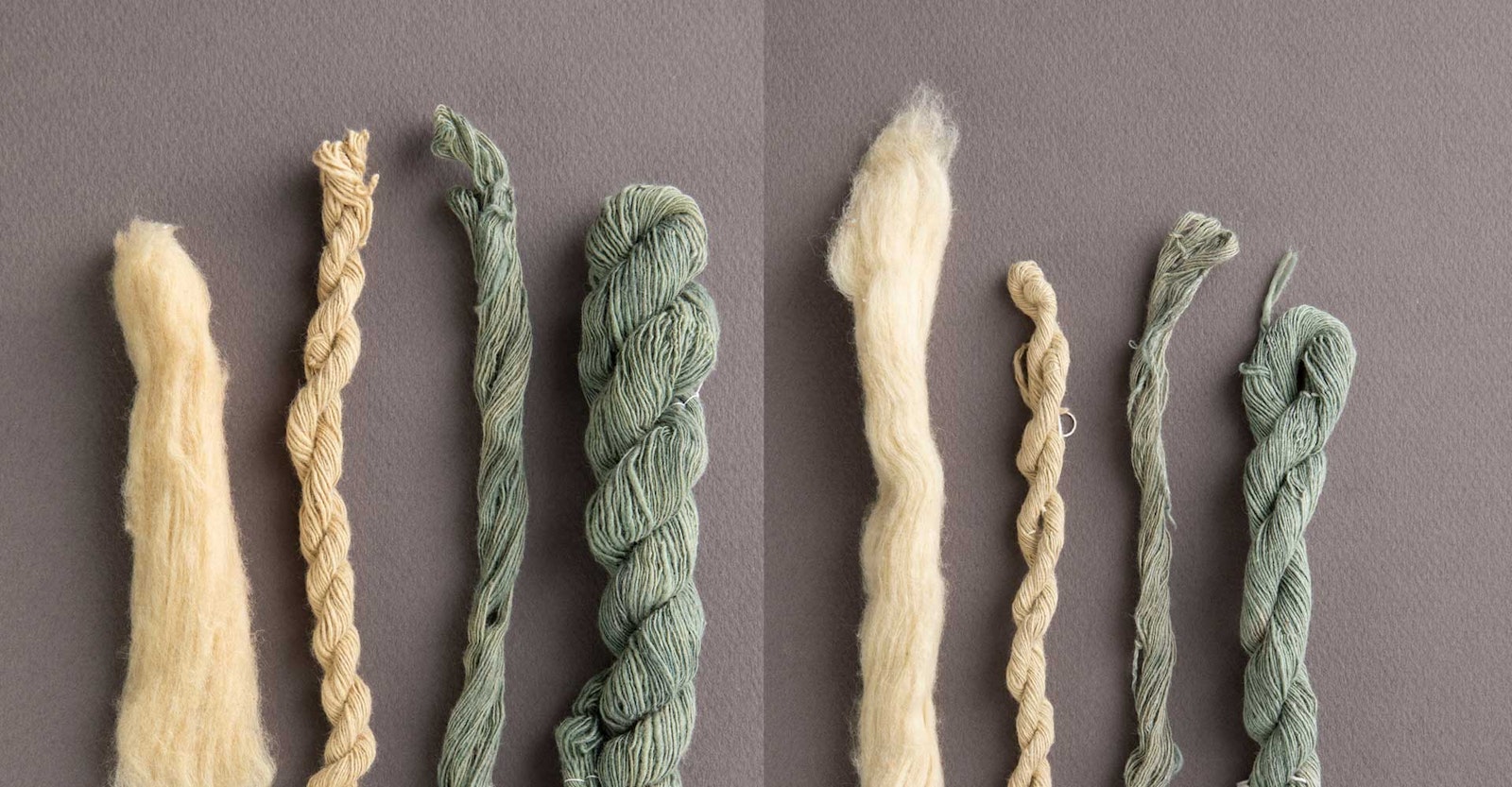Cotton breeder Sally Vreseis Fox has two green, organic-cotton slivers available in her online shop; I had to give them both a try. Both the Palo Verde and Sea Green cotton slivers are well prepared and open, and they draft smoothly and quickly.
When sitting down to spin, I decided to first reach for a supported bead-whorl spindle and bowl. I was delighted by how well both slivers slipped into fine and ultrafine yarns with few to no neps. Faster spinning at the wheel was no challenge for this fiber. These are beautiful preparations.
Seeing Green
At first glance, these slivers from Sally appear to be rather more yellow, almost a manila color. However, color in the sliver is deceptive. Yarn spun from the slivers turns vibrant green when in contact with a simple household cleaner: ammonia. The full-strength cleaner doesn’t harm the cotton. Rather, it develops the green color and makes it more durable. (Some brown cottons also change with dramatic results.)
The ammonia process was simple. The wetted sample skein was plunged into a jar with just enough full-strength household ammonia to submerge the skein. In 10 to 15 minutes, the skein was removed, rinsed in running water, and hung to dry.
Green cotton, over time, does fade somewhat. I have some green cotton textiles that were treated 30 years ago and are still green but just a bit lighter. Keep your green cotton yarns out of direct sunlight and strong ultraviolet or fluorescent light to keep them vibrant as long as possible.
For better than 40 years, Stephenie Gaustad has taught classes in spinning, weaving, and dyeing. Her articles have appeared in Handwoven; Shuttle, Spindle & Dyepot; Spin Off; PLY; add space and more. Her replicate textiles hang at the Pueblo Grande Museum in Phoenix, Arizona. She illustrated The Alden Amos Big Book of Hand Spinning, and her most recent book, The Practical Spinners Guide to Cotton, Flax, and Hemp, was released in 2014.
Resources
Foxfibre Colorganic cotton sliver, www.vreseis.com

